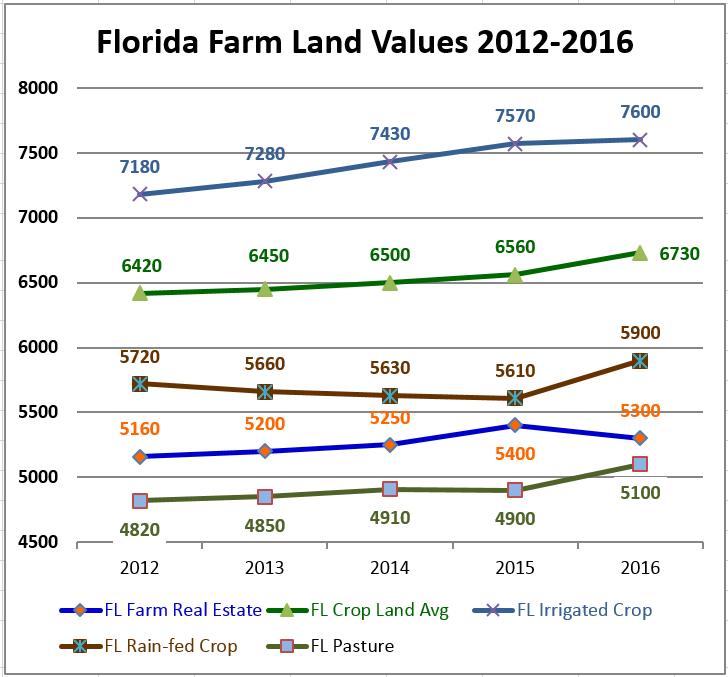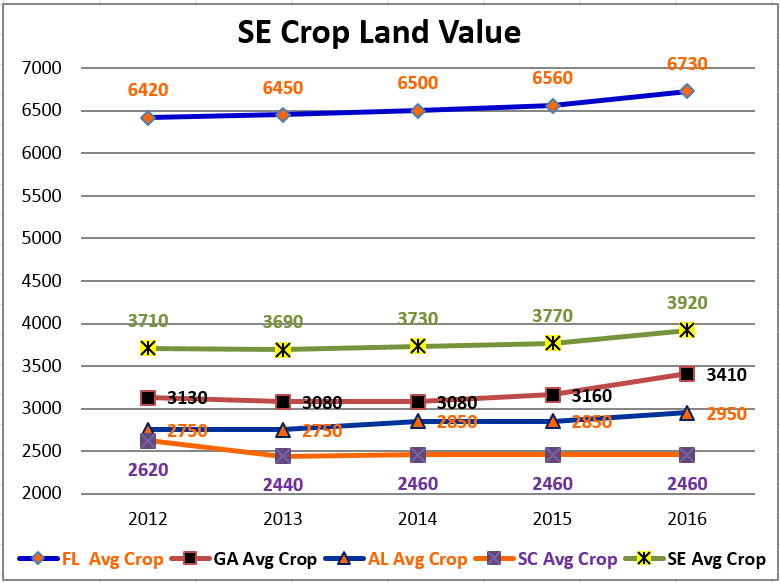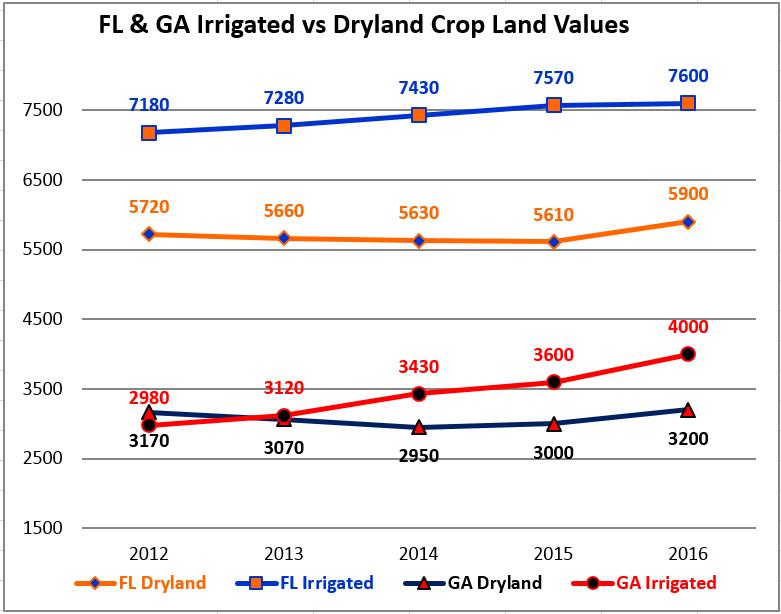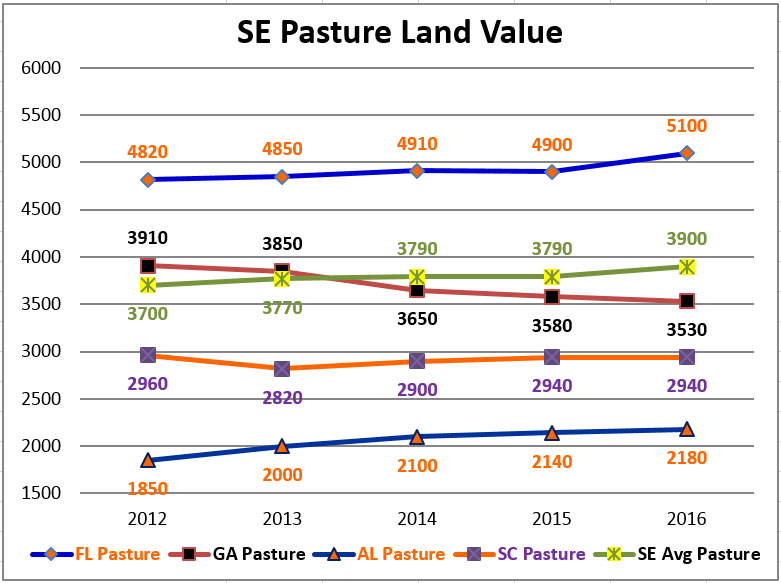2016 Florida Farmland Value Summary

Florida farmland values have held fairly steady over the past four years. According to USDA’s estimates, only the Real Estate Value (value of all land and buildings) of Florida farmland declined in 2016, down $100/acre from 2015. Crop and pasture land actually increased slightly in value over the past year. Average crop land value increased $70 per acre, and pasture land $200 per acre.
Southeastern States Summary
There is considerable variation between land values in Florida, Georgia, South Carolina and Alabama. Clearly proximity to larger urban areas, demand for development, and the types of crops grown in the four states influences land prices. This report does not break down land values into regions of each state, so the value of land in the Florida Panhandle land might more closely resemble the average for the Southeast.
Average Crop Land Value Estimates

The definition used to classify cropland includes field crops, vegetables, CRP, and hay production. Certainly the percentage of citrus, vegetable, and sugarcane land in Florida skews the value some as compared to the other states.
Irrigated Crop Land Value Estimates

In the USDA report, crop land values for many states are averaged, but for states such as Florida and Georgia, with a higher percentage of irrigated acres, they provided separate land values for both irrigated and dryland or rain-fed crop land.
Pasture Land Value Estimates

Pasture land values are much more similar across the southeast, but are still significantly higher in Florida, likely due to the higher demand for development. Interestingly, USDA estimates the value of Georgia pasture has declined over the past five years, while the other states have had a slight increase in value. Pasture land value in the Florida Panhandle would probably more closely resemble the average for the Southeast.
Source:ufl.edu